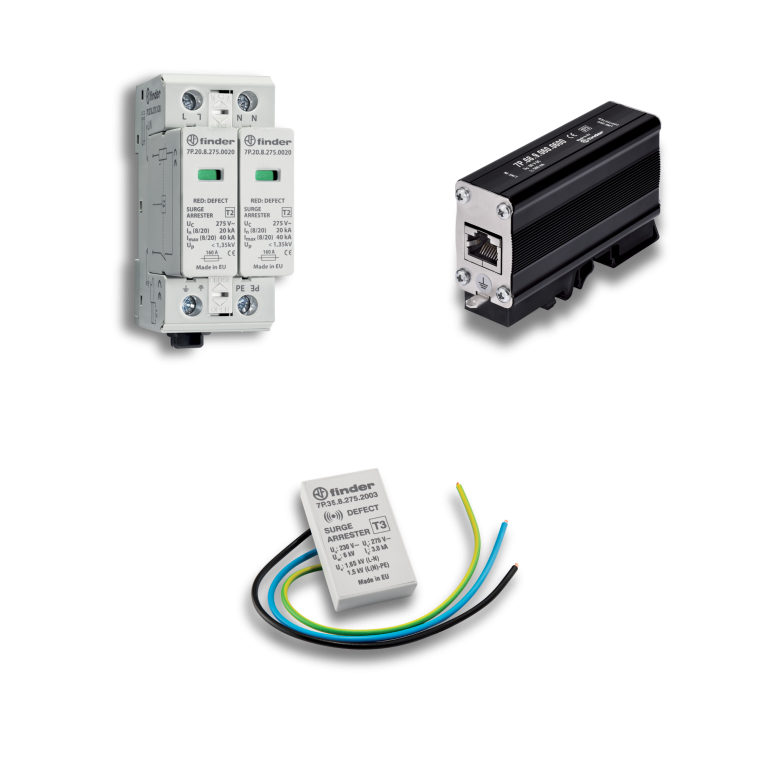The World Surges Ahead
The 18th edition regulations represent a change of protection for installations, designed especially to increase the level of safety and reduce the risks associated with transient over-voltages. Finder supply a complete range of surge protection to help protect your expensive control panels.
A Shocking Start
In 1752 Benjamin Franklin conducted his revolutionary experiment capturing charges from a mere cloud. An early adopter of Health and Safety, Franklin was cautious to stand on an insulator, keeping his long frizzled hair dry under cover to protect himself and to prevent the disaster of an electric shock. Others, captivated by the projects of Franklin, were indeed electrocuted in performing lighting experiments during the months immediately following, which highlighted the danger and the importance of the possibility of this discovery. And not one to be disengaged from his passions, Franklin invented the ‘lightning rod’, the first real step in surge protection.
Enlightenment
1775 marked the year that Alessandro Volta, a professor of physics at the Royal School in Como developed an improved version of the ‘Electrophorus’. A device that produced controlled, high voltage, static electricity. Volta continued his investigations and in 1776 ignited methane with an electrical spark, 80 years before the invention of the spark plug! One of the first to develop a real understanding of electricity, Volta went on to create the ‘Voltaic Pile’, a precursor to the modern battery, and now all those volts in a surge are named after him as a mark of his discoveries.
The World Surges Ahead
Franklin’s invention of the ‘Lightning rod’ provided the world with what was thought to be almost all of the protection it needed, stopping tall buildings from catching fire during the vicious thunderstorms that arose, until the invention of the electric telegraph.
However, the development of electrical distribution systems in the late nineteenth century brought the unfortunate consequences of electrical disturbances to everyone. And as those systems and the attached installations manifested in size, complexity, and value, so did the need for a more sophisticated approach for protection. That leads us to what we have today and the topic of this article, a new change in the wiring regulations.
Changes To The 18th Edition Wiring Regulations
January 2019 represents an important milestone in the industry. Changes for the 18th wiring regulations are going live, and some of these changes mean Surge Protection Devices (SPD’s) have increased importance in installations. Now, a risk assessment is required to be carried out by an electrician to determine whether an SPD should be installed. If a risk assessment is not carried out, then an SPD must be automatically installed.
The risk assessment should take into account criteria such as:
- The probability of lightning strikes
- The exposure of the building to transients
- The sensitivity and value of the electrical equipment that requires protection
- Earthing systems
- Level of protection required
Over-voltage protection is now required in certain circumstances. Where there is a risk of serious injury or loss of life, where many co-located people are affected, where there is an interruption to public services or commercial/industrial activity.
Finder Can Protect You!
Finder supply a complete range of surge protection to help protect your expensive control panels.
- Surge arrester suitable for 230/400 V system applications to prevent over-voltage effects caused by direct for indirect lightning strikes
- SPD Type 1+2
- Replacement spark gap and varistor modules (for single phase systems)
- Visual and remote signalling of varistor status





